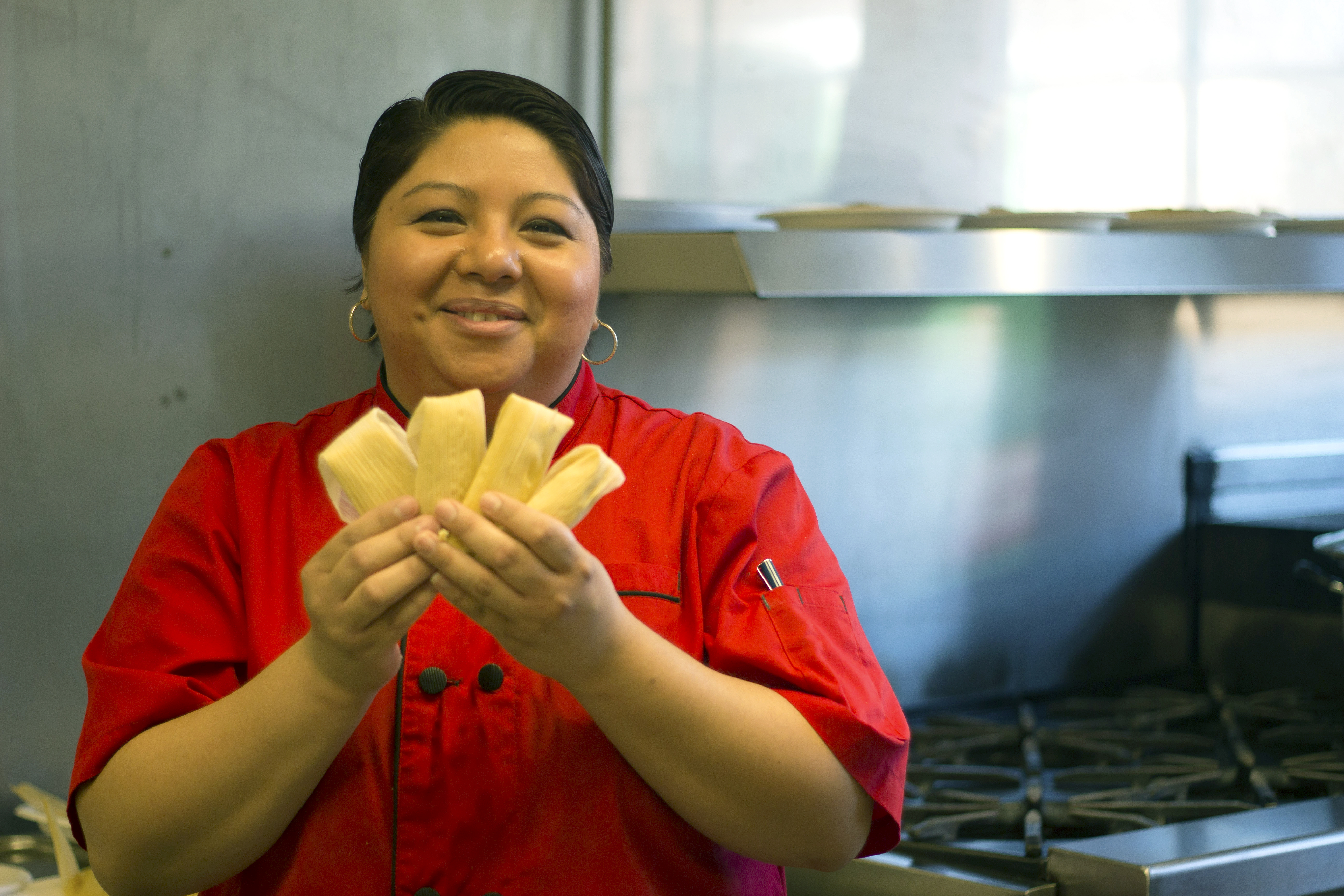Steve Fulton fondly remembers the bread of his childhood. “The taste was amazing. It was deeply aromatic and had this distinctive nutty flavor. You can’t find bread like that anymore,” he laments. The bread he remembers was baked by his mother from flour processed by his great-uncle. It was the flour that made his bread different.
Or rather, it was the flour mill that made it different: a special kind of mill, one that was poised to change a Washington industry that has remained unchallenged for more than a century. Dressed in a simple polo shirt and slacks, the semi-retired State Farm agent from Arlington says with a smile, “That’s why I’m bringing back my great-uncle’s mill, the Unifine.”
The availability of local, organic, and sustainable food in this city is staggering. Every restaurant, grocer, and farmer is constantly trying to find a way to grow it closer and greener in a never-ending battle of foodie one-upmanship. They won’t stop, either—not until they are literally growing kale in your mouth, or at least planting it so close to your table that it reverses global warming. But in this local fervor, one basic, Washington-relevant ingredient seems oddly, incredibly, left out: flour.
Around the turn of the 20th century, Washington’s local flour mills, which numbered more than 150, started dropping like flies. With them we lost the ability to buy a wide variety of flours with unique tastes and textures. They were replaced by massive roller mills, which could produce fine white flour at a very low cost. Roller mills were meant to streamline the process and maximize output, which meant more generic white stuff and less regional variation—fewer flours with the nuances provided by differing soil types or farms that specialize in certain types of wheat, like hard red winter and hard red spring, both of which grow exceptionally well in Washington.
The loss of these small stone or hammer mills and the rise of roller mills centralized the industry to just a few facilities, where nearly all grain would wind up to be processed and distributed. Washington state’s two main roller mills, in Spokane and Cheney, are like most: hugely inefficient energy hogs that rob flour of much of its nutritional content. While roller mills can make whole-wheat flour, they can only do so by separating and hydrating the grain’s constituent parts and then forcing them back together; the stamping, crushing, squeezing, hydrating, and rolling causes nutrient and flavor loss. To hear Fulton talk about roller mills, you’d think they were the tree-chopping machine from FernGully: “I’ve toured these mills. It’s almost comical how large they are. They’re so inefficient, it’s amazing.”
The Unifine is unlike any other type of mill. As grain is fed into it, an ultra-high speed rotor pulverizes the whole grain into incredibly fine flour. The process is over in a matter of seconds and requires a fraction of the power and equipment of larger roller mills. What’s produced is flour with more of its nutrients and flavor intact, yet still fine enough for baking. It also stays cooler during processing, which lowers the flour’s rates of rancidity. Unifine mills are affordable, too, so farmers or cooperatives will be able to purchase and run them.
The state’s third largest crop, wheat generates $1.14 billion in revenue. Yet for decades, the only options available have been local, organic whole-wheat flours that aren’t good for baking or roller-milled flours that are mass-processed from wheat grown with chemicals. The one or two places that do make whole-wheat flour use old stone or hammer mills that simply cannot produce flour as fine as roller mills can.
What’s needed is an alternative—something small and affordable enough that individual farms and co-ops could operate them, but also powerful enough so that the flour would be suitable for even the most delicate pastries. The Unifine seems the perfect solution. Why, then, has it been missing from Washington’s flour production?
The Unifine’s history in Washington is somewhat complex, but, as with most stories, it’s probably best to start with the Nazis. In the late 1930s, British miller John Wright became so concerned about the lack of nutrition in roller-milled white and wheat flour that he invented the Unifine rotor mill. Unfortunately, shortly after he built a prototype in the early ’40s, it was destroyed by German bombers during an air raid of London.
After the war, Wright came to the U.S. looking for investors to help him rebuild, and found an ally in Washington State University president Dr. Wilson Compton, who helped Wright raise the funds to build a new Unifine mill. Industry experts were amazed at the machine’s ability, calling it “a miracle.” The college began heavily promoting the mill, encouraged by everyone from farmers to government officials looking to use Unifine in developing nations. But one contingent was not happy: The flour industry’s Scrooge McDucks did not appreciate the potential competition.
In May 1949, William Hayley, director of productions and products control at Fisher Flour Company, sent Compton a letter, advising him that “The promotion of Unifine flour in a way designed to make all other flours appear inferior would seem to be short-sighted, to say the least, and most unworthy of the State College of the great wheat-producing state of Washington.” The result? No more promotion of the Unifine mill. The scientific community had spoken, the taste-testers had spoken—everyone was on board except a deeply entrenched industry and a few people who controlled a lot of money in the state. Unifine was killed before it could get off the ground.
A decade passed before another break came. Steve Fulton’s uncle, Leonard Fulton, a wheat farmer and grange member who had followed the Unifine’s dramatic history, eventually bought a few mills and used them for his own cooperative from 1961 to 1988, making the flour Steve so fondly remembers. When Leonard retired, there simply wasn’t enough demand to warrant continuing the mill. It was the ’80s; people loved Michael Jackson and Wonder Bread, not whole-wheat flour. Once again, Unifine fell off the map—or so everyone thought.
In 2006, on a whim, Fulton did a Google search for “Unifine,” curious to find out more about the mill his uncle had operated. He was astonished to discover Azure Standard, an Oregon farming cooperative making Unifine flour. Azure had found the mill collecting dust in a warehouse and rebuilt it as a side project, quickly realizing its benefits. They had made Unifine flour for years, and still do today, but have never attempted to sell the mills or promote that method in the industry. Yet their customers are obviously fans. Orders of Unifine flour over the past five years have nearly doubled.
In 2010, a milestone was reached.
For the first time in more than a century, whole-wheat bread outsold white bread, indicating a much larger move away from the flour that roller mills were created to make. Data like this fuels Fulton’s dreams of a return to localized milling, with Norman Rockwell-esque scenes of farmers processing their own flour and soccer moms subsequently clamoring for it at Whole Foods.
But Scott Yates of the Washington Grain Alliance isn’t so sure. “Farmers know how to farm. Milling is a complicated process, and most [farmers] just aren’t interested in pursuing processing.” Yates isn’t ruling it out, but is careful not to make any predictions.
Once he saw what Azure Standard was doing, Fulton began a full-on assault. Now his engineers have designed updated versions of the mills and are ready to start fabricating. At Azure’s current mills, he’s using existing models to create a pancake mix (called Cougar Pride) to help drum up interest. The mix is set to be released this fall in limited quantities. He’s also got a website (unifineflour.com) highlighting the mill’s history and a video describing the process—which is so intense you’d think it was a J.J. Abrams trailer for a flour movie, dramatically indicating that a Unifine mill will really fuck up some grains.
Steve’s ready, and it appears the market is too. We are food-obsessed enough to support such an industry change, and now we have the tools to do it. It’s all there, just waiting.










